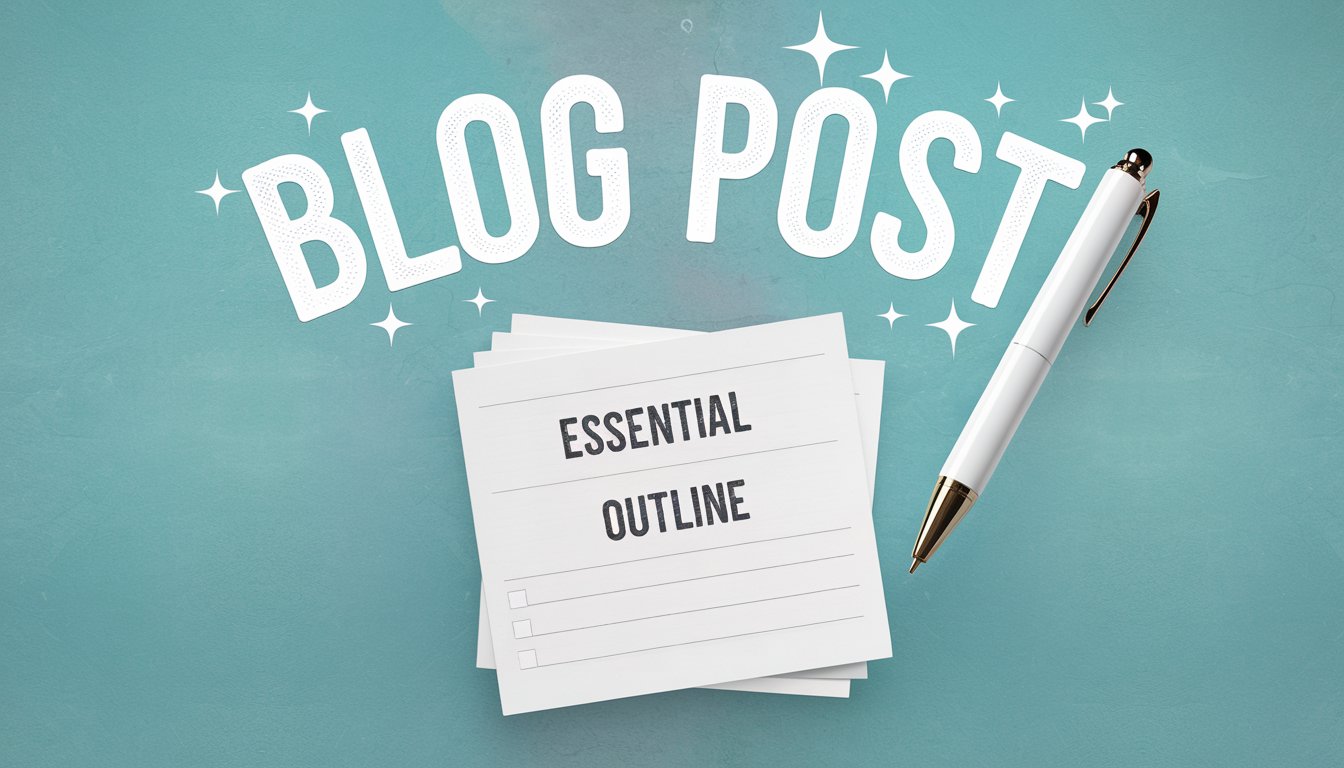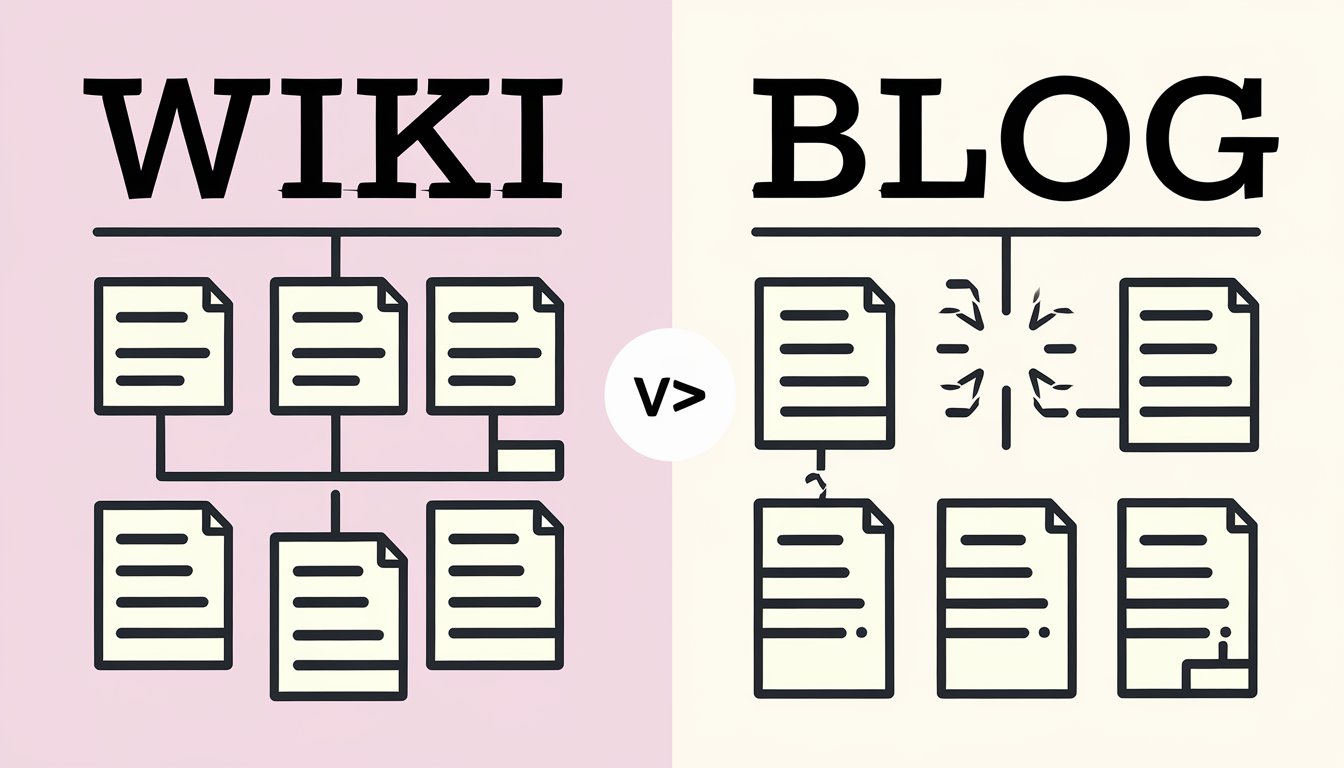Essential Blog Post Outline: Create Engaging Content Effortlessly
Struggling to keep your blog posts clear and engaging? A powerful blog post outline isn’t just a nice to have. It’s your secret weapon for creating irresistible content. With 73% of readers skimming posts for key insights, a well-crafted outline helps transform overwhelming ideas into bite-sized brilliance. This approach hooks attention and keeps readers scrolling.
Think of your outline as your creative GPS — it guides your writing, keeps you focused, and eliminates the chaos of going off-track. When you align your outline with your blog’s purpose and audience, you unlock the perfect format to grab attention and deliver value.
Ready to supercharge your blog game? Learn how to build an outline that boosts your SEO while ensuring your content resonates with readers. This approach will help your content rank like a pro.
The Importance of a Blog Post Outline
A well-crafted blog post outline organizes your thoughts, makes reading easier, and keeps readers interested. For writers stuck, an outline acts as a clear guide, helping to break through creative blocks.
Using outlines saves time and meets client needs. Bloggers can create shareable content by following a structured plan. A good outline has a title, subheads, details, data, and a conclusion.
Outlines also help with SEO by organizing content well. This makes it easier for search engines to find and rank your articles. Adding personal stories to your outline can make your content more believable.
Starting with a solid outline ensures your content is complete and meets your goals. Whether you’re writing a review or a how-to guide, a good outline is essential. Remember, well-written blog posts can lead to more leads and sales, making outlining a smart investment.
Key Components of an Effective Outline
A solid outline ensures that your ideas flow logically, keeps your writing focused, and enhances both reader engagement and SEO. By breaking your content into essential components, you can craft a well-structured, compelling post that delivers value from start to finish. Here are the key components to include in your outline:
- Brainstorming Topics: Start by identifying topics that will resonate with your audience. This step forms the foundation of your outline and ensures your content is relevant and engaging.
- Catchy Headline: The headline should clearly convey the topic of your post while incorporating your main keyword. A strong headline grabs attention and encourages clicks.
- Introduction: Craft an attention-grabbing introduction. Start with a hook, such as highlighting a problem or posing a thought-provoking question to draw the reader in.
- Main Points with Evidence: The body of your outline should include key points that are well-supported by evidence, statistics, or expert opinions. This adds value and credibility to your content.
- Subheadings: Use subheadings to break down your content into easily scannable sections. This enhances readability for both readers and search engines.
- Conclusion: End with a strong conclusion that summarizes your key points and reinforces the main message. A clear, concise conclusion effectively wraps up the post.
- Call-to-Action (CTA): To encourage reader engagement, include a compelling CTA at the end of your post. Ask readers to comment, share, subscribe, or follow a link to take the next step.
How To Choose the Right Blog Topic
Choosing the right blog topic is key to making engaging content. Start by looking at current trends and using tools like Ahrefs’ Keywords Explorer. This tool shows you topics that your audience might like. It also helps find subtopics that top pages in your niche cover.
Understanding your audience is also important. Check out Google’s People Also Ask boxes or use AlsoAsked to find popular questions. This way, you know what your readers want, making sure your content is relevant and interesting to them.
When you do keyword research, pick terms that fit your business goals. Look for topics that draw in visitors and could turn them into customers. Use tools like Semrush to see how competitive your chosen keywords are.
Make sure you can offer something valuable on the topic you choose. Go for subjects where you can share unique insights or detailed information. This way, your content will stand out and really help your audience.
Steps in Creating a Successful Blog
Starting a blog can be an exciting and rewarding endeavor, but to truly succeed, it requires more than just writing great content. Following a structured approach can help you stand out in the crowded blogging space.
Below are the essential steps to creating, promoting, and growing a successful blog. These strategies will help attract readers and keep them coming back for more.
1. Structure Your Outline for Clarity
Creating a clear outline is crucial for writing engaging blog posts. Start by deciding between linear and non-linear formats. Linear formats are great for step-by-step guides, while non-linear structures work well for topics with many connections.
Use bullet points and numbers to break down complex ideas. This makes your content easier to read and understand. Adding visual content like infographics or videos can also help. It makes your blog more interesting and informative.
Look at top-ranking competitors to find effective content formats. This helps you pick a structure that shows your expertise. You might use listicles for quick tips, how-to guides for practical advice, or in-depth tutorials for complex topics.
Your outline should have 5 to 10 main points with 2 to 5 sub-points each. This ensures you cover your topic well without overwhelming readers. By following these tips, you’ll make clear, engaging content that your audience will love.

2. Craft Compelling Introductions
Your blog introduction is your chance to grab readers’ attention. With over 600 million active blogs, standing out is crucial. Users spend an average of 52 seconds skimming a post, so your opening must be captivating. A strong content hook can make all the difference.
Start with a surprising or controversial statement to pique interest. Use short, concise sentences for easy readability. Incorporate statistics to build credibility; for example, 75% of bloggers report that creating outlines improves content clarity.
Personal stories can forge connections with readers. Sharing a brief anecdote makes your content more relatable and increases engagement. Keep your introduction between 100 and 200 words to maintain interest without overwhelming.
Address common pain points or pose thought-provoking questions to show you understand your readers’ concerns. Highlight the benefits readers can expect from your post to create anticipation and entice them to explore further.
3. Develop Your Main Content
Creating a solid structure is key to content development. Use subheadings to break down main points, making your blog post easy to scan and reader-friendly.
A well-structured blog post outline enhances clarity and boosts writing efficiency. Many professional writers who produce high word counts rely on templates to stay organized.
Adding evidence to support your main points adds depth and credibility. Incorporate facts, statistics, or expert opinions. For instance, 43.2% of all websites use WordPress — a notable statistic to bolster your arguments.
Maintain a consistent tone throughout your post to ensure coherence and keep readers engaged. Anticipate and address questions that arise around your main points, tying each back to your central theme for a unified message.
By applying these strategies, you’ll create compelling content that resonates with your audience, ultimately increasing both readership and income.

4. Storytelling Techniques in Blogging
Storytelling brings blog posts to life. Personal stories connect with readers, making your content relatable and engaging. A good story keeps readers hooked from start to finish.
Effective storytelling has three key parts: the opening grabs attention, the middle provides clarity, and the closing leaves a lasting impression. This approach can significantly boost blog traffic.
Using vivid descriptions and relatable characters makes your content memorable. Sharing your own experiences adds a personal touch. Even 150 words of compelling storytelling can transform your writing. By mastering these skills, your blog will stand out and leave a lasting impact.
5. Conclude Your Blog Effectively
A strong conclusion recaps the main points and motivates readers to act. Start by summarizing the key ideas you’ve covered. This helps your audience remember and understand your message better.
Then, create a compelling call to action. This step encourages readers to engage and tells them what to do next. You could ask them to subscribe, check out more articles, or leave a comment. Use direct language like “Sign up now” or “Share your thoughts below.”
Also, spark a conversation. Ask questions or invite readers to share their experiences. This builds a community and keeps readers interested. Remember, a good conclusion turns readers into active participants.
By following these tips, you’ll make blog conclusions that connect with your audience. Your readers will feel informed, inspired, and ready to move forward with your content.
6. Edit and Polish Your Blog Post
Blog editing is essential for creating high-quality content. To maintain your readers’ trust, start by checking for grammar and spelling errors.
Break long paragraphs into shorter ones to improve readability. This will keep your blog engaging and easy to follow.
Online editing tools can help identify areas for improvement and check for plagiarism, streamlining your workflow. Planning ahead can also make the editing process more efficient.
Ensure your tone matches your topic and audience. Use clear, simple language to communicate effectively. Pay attention to layout, word choice, and capitalization. By honing these editing skills, you’ll develop your unique style and create content that captivates readers.

7. Incorporate SEO Best Practices
SEO optimization is key to making your blog more visible. Start by focusing on where you place keywords in your content. Use long-tail keywords in your posts to target specific search queries. This approach helps you rank better and attract the right audience.
Don’t overlook meta tags. Create compelling meta descriptions that include your target keyword and summarize your content well. Keep title tags between 50-60 characters to ensure they show fully in search results. These elements help search engines understand your content and can boost click-through rates.
Structure your blog posts with SEO-friendly elements. Use headers, bulleted lists, and numbered lists to make your content easier to read. This improves user experience and can help your search engine rankings. Also, place important content above the fold to engage visitors quickly.
Lastly, prioritize mobile optimization. With over half of internet traffic coming from mobile devices, a responsive design is essential. Users are 52% less likely to engage with non-mobile-friendly sites. By following these SEO best practices, you’ll increase your chances of ranking higher and attracting more readers to your blog.
8. Promote Your Blog Content
Getting your blog noticed requires effective content promotion. Start with a solid social media strategy. Share posts on platforms like Facebook, Twitter, and LinkedIn, using eye-catching visuals to grab attention and drive clicks.
Tailor your approach for each platform to maximize engagement. For example, LinkedIn may require a professional tone, while Twitter thrives on concise, catchy updates.
Building an email list is another key promotion strategy. Encourage readers to subscribe by offering exclusive content or early access to new posts. Send regular updates to keep your audience engaged and drive traffic back to your blog.
Collaborating with other bloggers in your niche can also expand your reach. Guest posts or joint projects expose your content to new audiences and foster valuable relationships.
For key posts, consider paid promotion or influencer partnerships to boost visibility. Track your results, refine your strategies, and consistently create valuable content. With persistence, your blog audience will grow, and engagement will increase.
9. Monitor Performance and Improve
Blog analytics give you insights into what your audience likes and does. Start by looking at page views, time on page, and bounce rates.
These numbers show you which topics your readers enjoy and where you can improve. Performance tracking is more than just numbers. Look at comments, social shares, and click-through rates on calls to action.
These details show how well your content connects with your audience and prompts action. Remember, longer headlines (14 words or more) can double traffic and shares, SEMrush found.
Use tools like Google Analytics to collect detailed data on your blog posts. Then, regularly check these insights to spot trends and make changes. For example, posts with bracketed clarifications in headlines can boost click-through rates by up to 38%.
By constantly improving your content based on these insights, you’ll make more impactful blog posts. These will rank higher in search results and better engage your target audience.
Bringing It All Together: Your Blueprint for Blogging Success
Creating engaging blog posts doesn’t have to be overwhelming when you start with a strong foundation. By focusing on clear outlines, purposeful storytelling, and effective SEO techniques, you set the stage for content that resonates with readers. This approach ensures your content achieves your goals.
Every blog post is an opportunity to connect, inform, and inspire. Make the most of it, and watch your audience grow along with your influence. Now, it’s time to take your ideas and turn them into content that truly makes an impact!
Want to create even better blog posts? Discover more tips and strategies for perfecting your blog content, including outlining techniques, at After Social. Start crafting posts that captivate and engage your audience today!





